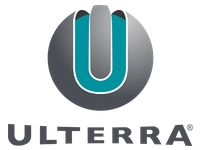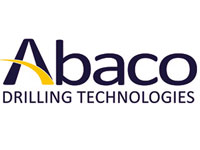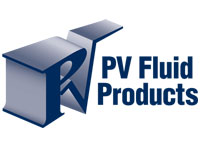AADE Houston IETG Meeting
When: Jan 23, 2025 @ 1:00 PM
Want to SPONSOR the IETG Meetings? The cost is $600 for the calendar year. Click Here to Sponsor!
REGISTER HERE
Attendance of this meeting in entirety could be credited up to 2 professional development hours.
DATE: Thursday, January 23, 2025 - 1:00 PM - 3:00 PM
Note NEW Start Time! Registration/Check-in begins at 12:45 PM.
Note NEW Start Time! Registration/Check-in begins at 12:45 PM.
LOCATION: Norris Conference Center – City Centre: Elm Room, 816 Town & Country Blvd., Suite 210, Houston, TX 77024
COST: Member: Free to attend / Non-member: $15
Non-members have the option to join as a member or renew your membership before registering, then the meeting cost will be free as well as all subsequent DTC meetings for 2025.
Program Topic: “Autonomous Data Gathering"
SPEAKERS:
1. Faraaz Adil, Sr. Product Manager-Unconventionals - Halliburton Production Enhancement
Presenting: Halliburton Sensori™ Fracture Monitoring Service
The Sensori™ fracture monitoring service is designed to execute continuous subsurface monitoring using autonomous data gathering and analysis. It provides a consistent data stream of near-well and cross-well fracture results so operators can integrate, visualize, and measure dynamic subsurface changes in real time.
The system enables real time visualization of strain and Microseismic data processed using Machine Learning algorithms. The objective is to continuously collect sub-surface data and utilize the information over time to draw insights and trends from dynamic information which will influence changes in frac design, completion design, and well placement.
Faraaz Adil is the manager for Sub-surface diagnostics within the Halliburton Production Enhancement Product Service Line. His focus is on enhancing Halliburton's sub-surface diagnostics capabilities using innovative technologies and digital differentiation. He has been with Halliburton for over 15 years and worked across Asia Pac, Middle East and the North America regions.
2. Vineet Chawla, Lead Production Engineering Consultant - Weatherford
Presenting: Autonomous Control for Optimizing Rod Lift Pumping Speeds in Declining North American Oil Wells
Rod Lift, a common artificial lift mechanism for mature wells, faces challenges in optimizing production efficiency, especially for low-producing wells. An autonomous control solution at the enterprise offers an alternative, cost-effective approach to optimize production efficiency and prevent premature equipment failures. The Optimization Platform offers an Autonomous Well Control capability for daily optimization of well performance. It adjusts controller setpoints based on daily average SPM categorizing wells as over- or under-pumping and adjusting VFD Max SPM accordingly. Currently implemented on 600 RRL wells in North America’s Bakken region and expanded to Eagle Ford, this solution reduces pumper field visits by ~50%, workover costs by ~15%, and increase oil production by ~2%. It effectively reduces the workload of production engineers, operators, and pumpers while ensuring optimal RRL system efficiency.
Vineet Chawla holds a Bachelor of Technology degree in Petroleum Engineering from the University of Petroleum and Energy Studies, India, awarded in 2007. Since his graduation and joining Weatherford in 2010, he has accumulated approximately 17 years of experience in software and production engineering, with specific focus on artificial lift systems. His expertise encompasses design, surveillance, and production optimization of these systems. In his current role, Vineet is responsible for providing production optimization consulting services to Weatherford’s clients. He also offers software trainings and demonstrations, leads technical support for Optimization software implementation projects within the NAM geo zone, and mentors new engineers on Weatherford’s digital solution offerings.
3. Paul Pastusek, P.E., Former SPE DL Speaker - retired ExxonMobil
Presenting: Drilling Rig Control Systems: Detecting Auto-Driller Dysfunction and Improving Behavior
Drill rig control systems are often not as well tuned nor as well behaved as expected. There can be substantial interaction between systems that is not recognized and is attributed to ‘difficult drilling’. This may only become obvious when supervisory control automation systems are added on top of the existing controllers.
This lecture shares some of the key findings on detecting, modeling, and correcting these issues, with particular attention on integrating drill string models with auto drillers, top drives, and active torsional damping systems. An unstable auto driller controller may induce stick-slip and lead to inefficient drilling and bottom hole assembly damage.
The torque limits set in the auto driller, top drive, and automation systems can also interact in ways that confound attempts to eliminate control instability. In general, this interaction between controllers is not well understood by the industry and may not be recognized as a separate excitation mechanism for stick slip. Current best practices are shared to minimize the interaction of these three systems, but this is still an active area of discovery.
Simulation and rig trials have shown that this dysfunctional behavior can be mitigated by appropriate adjustments to the control system. Multiple systems have been designed that make these adjustments automatically and are now being deployed. In general, all control systems, not just drill rigs, can and should be modeled, monitored, and tuned to get the best performance of the system with unconditionally stable performance.
Paul Pastusek develops deep technical insights in drilling mechanics data as the Chief Technology Officer at Pastusek and Associates. His expertise is in rig instrumentation, control, and automation, drill string dynamics, steerable systems, borehole quality, bit selection and applications, cutting mechanics, and failure analysis. He received the 2020 SPE International Drilling Engineering Award and gave a series of Distinguished Lectures on Rig Control Systems. He has a BSME from Texas A&M University and MBA from the University of Houston. He is a Registered Professional Engineer, holds 43 US patents, and has delivered 80+ papers and presentations on drilling technology.
Register Here.
Reservations are required!
Deadline for reservations is Noon, Wednesday, Jan 22.
Location:
Norris Conference Center - CityCentre - Elm Room
816 Town & Country Blvd., Suite 210
Houston, TX 77024
Registration begins at 12:45 PM.
Parking:
The Norris CityCentre facility is located at the corner of intersection of IH-10 West and Beltway 8. The location features plenty of complimentary parking.
IMPORTANT NOTE – For your convenience, we encourage you to park in the garage that is attached to the Norris Centers location (enter the parking garage from Beltway 8). Take the “up” ramp in the middle of the parking garage. You will see signs with the Norris name and logo directing you to the correct floors to park. Please note that a number of parking spaces are reserved for other tenants of the complex and have “reserved” signs identifying these spaces, so please avoid parking in these reserved spots. There is plenty of parking on the roof!
For additional driving directions & a map, check their website at: https://norriscenters.com/houston-citycentre-map/

Contact houston@aade.org for any further questions.

Search AADE for PDF Files
© 2024 American Association of Drilling Engineers
Follow AADE:
This website uses cookies. By continuing to browse this website without changing your web-browser cookie settings, you are agreeing to our use of cookies. To learn more read our privacy policy.
Ok







